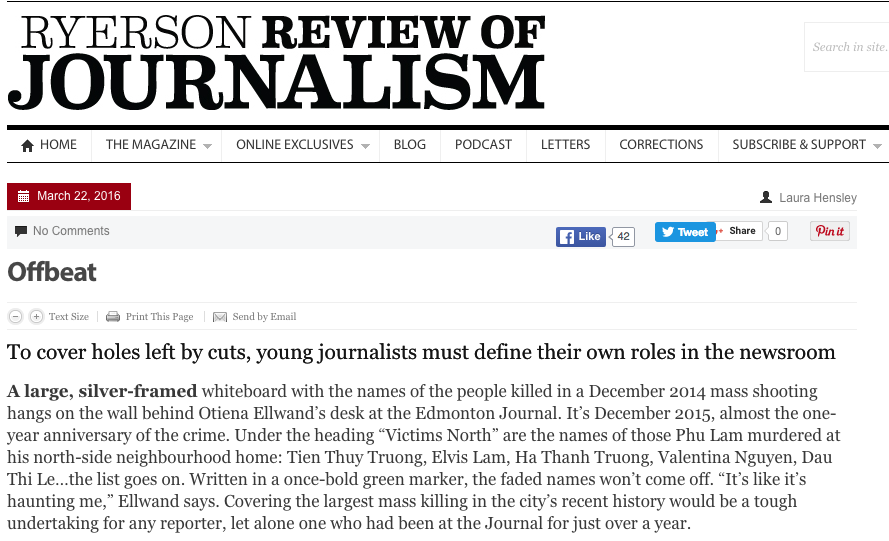As newsrooms shrink, reporters juggle multiple duties while carving out a niche for themselves.
J-Source is going behind the scenes of the 2016 issue of the Ryerson Review of Journalism. To read past stories, visit our Field Notes section.
By Laura Hensley
During a recent trip to Australia, I sat with a retired environmental journalist and talked about his life as a reporter on the beat. He described a time when the majority of journalists had a defined area of focus, and newsrooms had enough money to send reporters abroad to cover stories. Speaking to seasoned Canadian journalists, this also was the case.
Now, things have changed. As an emerging journalist, I became interested in learning how our current digital landscape has affected beats, and what this shift means for reporters today. I began speaking to young journalists about their roles in the newsroom and discovered that many of them work general assignment in addition to covering a beat.
I went to Edmonton to shadow Otiena Ellwand at the Edmonton Journal and witnessed firsthand the immense pressure reporters in trim newsrooms are under. In addition to writing stories for web and print, Ellwand is expected to tweet, take photos and film video footage—often at the same time. As newsrooms shrink, young journalists need to prove their value as reporters.
Like Ellwand, Ashley Csanady at the National Post and Kelly Bennett at CBC Hamilton have official titles that differ from their unofficial beats. Newsroom reconfiguration and digital disruption has combined to create a scrambled beat culture. In a time where money is tight, doing more with less is imperative.
Read “Offbeat” on the Ryerson Review of Journalism website.
Laura Hensley is the departments editor for the spring 2016 issue of the Ryerson Review of Journalism. Her work has appeared in the National Post, This Magazine and Worn Fashion Journal.

